von Doug Marett
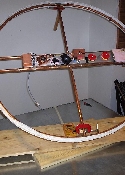
Detecting Earth’s Rotation Through Space
Using a Large Area Sagnac Interferometer
Doug Marett (2011)
The YouTube video of this experiment is here
The original Michelson Morley experiment sought to measure earth’s motion through space using a purely optical means. As is well known, this experiment failed to detect the translational motion of the earth in its orbit around the sun. The issue, as Lorentz pointed
Den ganzen Beitrag lesen »
von Wolfgang Engelhardt

CERN Neutrinoexperiment: GPS und SRT
Wolfgang Engelhardt, 23.05.2013
Das Neutrinoexperiment vom Herbst 2011 zwischen CERN und LNGS hatte den Nebeneffekt, dass die Aufmerksamkeit auf den unter Physikern lange verdrängten oder vergessenen Sagnac-Effekt gelenkt wurde. Im Jahre 1913 entdeckt, wurde der Effekt von Michelson und Gale 1925 dazu benützt, den Nachweis zu führen, dass die Lichtgeschwindigkeit auf der Erde nicht konstant, sondern anisotrop ist. Selbstverständlich bedeutete dies, dass die Maxwellgleichungen in der heute gelehrten Form auf der Erde
Den ganzen Beitrag lesen »
von G.O. Mueller

Aus der Dokumentation von G.O. Mueller Kapitel 2 – Fehlerkatalog
Q: Methodik / Fehler Nr. 11 (English Version…):
Die Relativistik behauptet grundsätzlich alle gefundenen (und auch die wieder schnell geänderten) mathematischen Beziehungen (Gleichungen) als physikalische Realität
Die als „Mathematismus“ kritisierte Handlungsweise ist von Albert Einstein praktiziert worden und bis heute ein charakteristisches Kennzeichen der Relativistik geblieben.
Den ganzen Beitrag lesen »
von Gunter Kohl
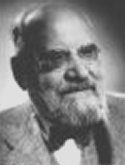
Relativität in der Schwebe: die Rolle von Gustav Mie
Gunter Kohl
Vorwort von David E. Rowe
Berlin: Max-Planck-Institut für Wissenschaftsgeschichte, 2002. 133 S. (Preprint. 209.)
Datei ohne Erscheinungsvermerk; 134 Seiten
Online lesen…
.
Den ganzen Beitrag lesen »
Journal Progress in Physics
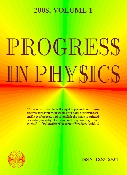
Journal edited by Dmitri Rabounski (Editor in Chief), Florentin Smarandache, Larissa Borissova, Stephen John Crothers
About the Journal
Progress in Physics is an American scientific journal, registered with the Library of Congress (DC, USA): ISSN 1555-5534 (print version) and ISSN 1555-5615 (online version). Our journal is peer reviewed and listed in the abstracting and indexing coverage of: Mathematical Reviews of the AMS (USA), DOAJ of Lund University (Sweden),
Den ganzen Beitrag lesen »
von Herbert E. Ives

The Aberration of Clocks and the Clock Paradox
Herbert E. Ives
In: Journal of the Optical Society of America, Sept. 1937, Volume 27, No. 9
In a preceding paper,1 I have schown that clocks experiencing the Larmor-Lorentz frequency change are altered in setting by transport by exactly the amount necessary to make the measured times of transit of light signals invariant on a uniformly moving body, subject to the Fitzgerald contraction. Study of this change of setting suggests that if clocks
Den ganzen Beitrag lesen »
von Forrest Bishop

Reforming Electromagnetic Units, Equations, and Concepts: An Extension of Ivor Catt Theory
Forrest Bishop
2012, 19th Natural Philosophy Alliance Conference, Albuquerque, NM, United States
Abstract:
Some of the problems, paradoxes, and clutter within the mathematical physics of the past few centuries are briefly reviewed. Catt’s concept of illusory static fields created by TEM
Den ganzen Beitrag lesen »
von G.O. Mueller

Aus der Dokumentation von G.O. Mueller Kapitel 2 – Fehlerkatalog
Q: Methodik / Fehler Nr. 10 (English Version…):
Albert Einsteins SRT und ART werden mit anschaulichen Objekten und anschauenden Beobachtern und ihren angeblichen Beobachtungen entwickelt; die Forderungen von Kritikern nach Anschaulichkeit der behaupteten Effekte wird dagegen abgewiesen
Die Frage der Anschaulichkeit ist besonders in den ersten Jahrzehnten der Theorie
Den ganzen Beitrag lesen »
von Louis Essen
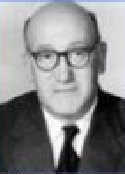
Atomic Standards of Length and Time
Louis Essen
Standards Division – National Physical Laboratory – Teddington
In: the general science journal – Vol. XLVII APRIL, 1959 No. 186
Abstract:
The units of measurement used in science for evaluating the fundamental quantities length and time are the metre and the second. Although originally related to a particular
Den ganzen Beitrag lesen »
von Herbert Dingle
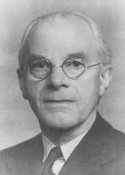
The Resolution of the Clock Paradox
Herbert Dingle
© CSIRO Australia – Provided by the NASA Astrophysics Data System
In a recent paper (Builder 1957) Dr. G. Builder discusses the well-known “clock paradox” on the basis of the restricted theory of relativity. The problem considered, to quote his own description, arises from the following hypothetical experiment: “It is supposed that two observers R and M, equipped with identical synchronized clocks, are initially at rest
Den ganzen Beitrag lesen »








